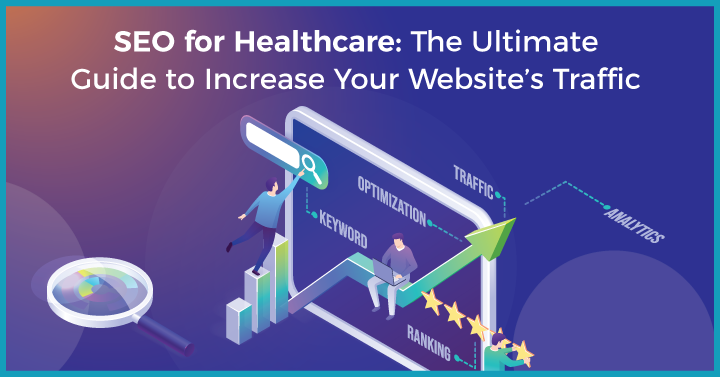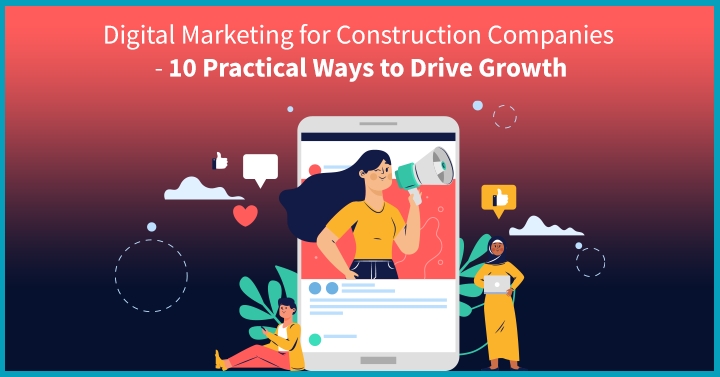In today’s fast-paced digital landscape, establishing a strong online presence is essential for businesses to reach their target audience. One such key strategy in online marketing is search engine optimisation (SEO), which involves optimising websites to improve search engine rankings and drive organic traffic.
However, traditional SEO often focuses on general keywords and attracts a broader audience who may not necessarily be interested in the company’s products or services. This results in lower conversions, higher bounce rates, reduced ROI, etc.
Now, the crucial question is – “How can companies effectively target their desired audience?”
The answer lies in implementing targeted SEO strategies that specifically attract relevant traffic and generate qualified leads. By tailoring SEO efforts to the desired audience, businesses can effectively reach the people who are more likely to engage with their offerings.
In this blog, we will understand all the nitty-gritty concepts of targeted SEO and ways to create an effective strategy for businesses.
Let’s dive.
1. What is Targeted SEO?
Targeted SEO, also known as audience-focused SEO, is an advanced approach that emphasises on reaching and engaging a specific segment of the audience through customised content.
It involves optimising a website to achieve higher rankings in search engine result pages for keywords and phrases that are directly relevant to the target audience. By adopting this targeted approach, your business can establish itself as the most appropriate and authoritative source in the search results for the intended audience.
2. Why is Targeted SEO Important?
“According to Rockcontent, “95% of search traffic goes to the first page of the search results”.
This statistic highlights the critical need to rank your website on the first page of search engine result pages (SERPs) to maximise its visibility. In this regard, targeted SEO provides substantial advantages by assisting your website in achieving higher rankings and attracting the specific audience you desire.
Let us delve into the detailed benefits now.
2.1 Drives High-Quality Website Traffic
When a website is optimised with targeted SEO strategies, it aligns with the specific needs and preferences of the intended audience. As a result, it brings in high-quality traffic by attracting visitors who find the website relevant and informative, reducing the likelihood of them leaving prematurely. This, in turn, leads to a lower bounce rate, increased chances of conversions, improved return on investment (ROI), and enhanced profitability for the business.
2.2 Boosts Website’s Visibility in Local Search
If your business operates within a niche or caters to a specific demographic with local demand, optimising your website for localised terms and incorporating location-specific information can significantly improve your brand’s visibility in local or “near me” searches. This way, you can increase the likelihood of appearing prominently in search results when users in your target area seek relevant products or services. Thus, increasing the likelihood of converting local customers and driving business growth.
2.3 Fosters User Engagement and Interaction
By employing targeted SEO techniques, businesses can create a seamless user experience for their website visitors. Businesses can encourage user engagement and interaction by optimising website structure, improving page load speed, personalised content, strong call-to-actions, and other relevant strategies. This positive browsing experience eventually results in more prolonged website visits, increased user engagement levels, enhanced social shares, and a higher likelihood of repeat business.
2.4 Enhances Brand Credibility and Trustworthiness
Targeted SEO includes the strategic acquisition of backlinks from reputable websites with high domain authority. These valuable backlinks act as endorsements and signal search engines that your content is trustworthy and reliable. As a result, your brand’s credibility is significantly enhanced, fostering trust and confidence among your target audience and allowing you to establish your business as a trusted leader within the industry.
2.5 Minimizes Over-dependency on Ad Spending
Many companies heavily rely on advertising to generate quality leads and boost sales. However, the long-term sustainability of paid campaigns becomes expensive due to growing competition in paid ads placements and bidding strategies. Conversely, targeted SEO is a cost-effective approach that provides a consistent stream of targeted traffic as the web pages continue to rank well in search results over time.
Now that you have understood the benefits of targeted SEO in digital marketing, let’s delve into the various techniques that can effectively generate leads.
3. What are the Ways to Generate Leads Through Targeted SEO?
According to Ruler Analytics,“37% of marketers stated that generating high-quality leads was one of their biggest challenges”.
Targeted SEO can play a key solution in addressing this challenge by attracting more relevant website traffic. Here are a few proven methods to generate high-quality leads:
3.1 Direct Lead Generation Through Targeted SEO
It involves optimising the website through on-page SEO tactics, persuasive content, and enhancing the conversion process.
Here are some strategies for direct lead generation:
- Keyword Optimisation: To attract potential customers, businesses must conduct comprehensive keyword research to identify relevant search terms. By strategically incorporating these keywords into their website’s content, including landing pages, blog posts, and product/service descriptions, they can attract organic traffic and generate valuable leads.
- Compelling Title & Meta Tags: It is imperative to create persuasive titles, meta tags, and descriptions that entice users to visit the website. These elements should provide a clear summary of what users can expect to find, effectively highlighting the unique value proposition of the offerings. This can increase the click-through rates, ultimately leading to higher lead generation.
- Call-to-Action (CTA) Placement: By incorporating CTAs throughout the website, businesses can effectively guide visitors towards taking desired actions such as signing up for newsletters, requesting quotes, scheduling demos, or downloading gated content. This approach effectively generates valuable leads that can be nurtured and converted into loyal customers.
- Landing Page Optimisation: Businesses can create dedicated landing pages that align with specific search queries or campaigns. These pages should be optimised with targeted keywords, compelling content, and lead capture forms. optimised with targeted keywords, compelling content, and lead capture forms. By offering valuable information and enticing offers on these pages, businesses can effectively convert visitors into qualiied leads.By offering valuable information and enticing offers on these pages, businesses can effectively convert visitors into qualified leads.
3.2 Indirect Lead Generation Through Targeted SEO
These are the strategies that may not directly capture leads on your website but still contribute to generating leads over time.
Here are some methods for indirect lead generation:
- Social Media Integration: Harnessing the power of social media allows businesses to maximise their online visibility and connect with their target audience. By actively promoting their website, landing pages, and lead magnets across social media channels, businesses can drive high-quality leads and foster meaningful engagement.
- Local SEO: If your business is in a specific location, implementing local SEO strategies can indirectly generate leads. Companies can optimise their website for location-based keywords, create Google My Business listing, and encourage customer reviews and ratings. This helps potential customers find businesses in local search results and increases conversions.
- Link Building: Businesses can build a network of high-quality backlinks to their websites through strategic outreach, guest blogging, or partnerships. By actively pursuing backlinks from trustworthy sources, businesses can strengthen their online presence and ultimately attract more qualified traffic that can potentially convert into valuable leads.
Now that you have understood various methods, let’s explore how to develop a proper targeted SEO strategy.
4. Steps to Create an Effective Targeted SEO Strategy that Drives Leads
In today’s competitive landscape, adopting a strategic approach to targeted SEO is crucial for driving overall business growth.
Let’s explore the essential steps by which we can an effective strategy
4.1 Define Your Specific Offerings
The first step in creating a result-driven targeted SEO strategy is to clearly understand specific products, services, or solutions your business offers. Let’s take the example of a B2B product development company that provides comprehensive product development solutions for various industries. Their offerings include concept ideation, engineering, prototyping, manufacturing, and post-production support. By offering end-to-end solutions, they ensure that clients can rely on a single provider throughout the entire product development lifecycle.
4.2 Identify Your Unique Value Proposition
The next step is to identify the key selling points and determine what sets your offerings apart from competitors. Let’s continue with the example of a product development company – their unique selling propositions could be the expertise and experience of a development team, customisable and flexible solutions, competitive pricing, and exceptional customer service. This way, you can develop a targeted SEO strategy that effectively communicates your strengths and advantages to your target audience.
4.3 Understand Your Target Audience
To create a result-driven strategy, businesses should analyse their target audience’s demographics, preferences, needs, and search behaviour. Knowing this helps identify the keywords they use when searching for products, services, or information related to your website. Using this information, you can understand their search intent and create relevant, engaging content that aligns with their needs. Thereby improving your website’s visibility and driving valuable organic traffic.
4.4 Analyse Your Competitors
Next, you should conduct a competitor analysis to understand the competitor’s tactics and identify areas where you can differentiate your business. You can also leverage untapped opportunities by analysing their keywords, content types, backlink profiles, and social media presence. It enables you to create a more informed and strategic targeted SEO approach to outperform your competitors, attract more organic traffic, and generate high-quality leads for your business.
4.5 Identify Relevant Keywords
To drive targeted traffic to your website, it is essential to identify relevant keywords and phrases that align with your target audience’s search intent. By incorporating these long-tail keywords strategically throughout the website, content, meta tags, headings, and URLs, can increase the chances of ranking high in search engine page results (SERPs) and attracting organic traffic from users actively seeking the products, services, or information you provide.
4.6 Develop Targeted Content
To execute a targeted SEO strategy, you should focus on creating high-quality, valuable content that aligns with the identified keywords and solves the queries of your target audience. It involves developing blog posts, landing pages, guides, videos, or other content formats that provide solutions, educate, and engage potential leads. By consistently delivering valuable content, you’ll not only attract new leads but also have the opportunity to convert them into loyal customers.
4.7 Implement On-Page & Off-Page SEO Techniques
On-Page and off-page SEO are two critical components of a comprehensive SEO strategy. On-page SEO involves optimising your website’s elements like meta tags, headings, URLs, and internal linking to make it user-friendly and search engine-friendly. On the other hand, off-page SEO focuses on building your website’s authority through link-building and social media promotion. Combining these strategies enhances your website’s visibility, credibility, and overall performance in search engine rankings.
4.8 Monitor Performance & Optimise the Content
Lastly, as part of your targeted SEO strategy, it’s crucial to monitor your SEO performance continuously. You need to keep track of critical metrics such as organic traffic, keyword rankings, page sessions, impressions, bounce rates, conversion rates, etc. This data will provide valuable insights into your website’s performance and help you identify areas that need improvement. By refining your SEO strategy based on this data, you can drive more leads and improve your overall SEO effectiveness.
Now that you know the critical steps, let’s explore how a digital marketing agency can assist you.
5. How Does a Digital Marketing Company Help You?
A digital marketing agency can provide comprehensive support in achieving your goals by developing a result-driven targeted SEO strategy. With a wealth of expertise and knowledge in various aspects of digital marketing, it helps you identify the right keywords and optimise content to drive high-quality leads.
Growth Ganik is a leading full-stack marketing agency that helps companies maximise their online visibility with effective SEO strategies. Our experts work with you to effectively reach your target audience, drive meaningful engagement, and achieve your ultimate business goal.
Ready to generate high-quality leads for your business?
Schedule a 45-minute consultation with our team of SEO experts!
















